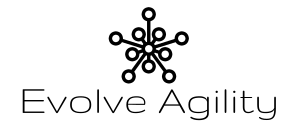
Generative vs. Prescriptive
The generative rules for the pattern are different from descriptions of the pattern.
Murmurations of starlings are mesmerizing. I can sense that each starling is twisting, tumbling, diving, and flying to its own accord, but together the swarm acts as if it were one.
The rules that govern each starlings behavior are few and relatively simple.
- Position self to be near approximately seven other birds
- Don’t bump into each other
- Follow the neighboring bird’s direction
These rules have been modeled to generate life-like animation in movies.
Let’s look at another example.
I see triangles. There are triangles within triangles, and if I look closely, triangles are inverted within triangles. This is a description of the pattern that I see. You may describe it differently.
Prescribing this pattern to someone else to recreate it will lead to wildly different results and nothing like the original. At best, it will be a fake replica of the original.
The generative rule that consistently leads to the actual outcome above is called the hat rule from the field of Cellular Automata.
Imagine a grid of square cells. Where the cells can hold states
(0) Black: for wearing a black hat to school (1) White: for not wearing a black hat to school
Let’s say a student wears a black hat to school one day. Will this start a trend?
Each row in the grid represents an iteration where all the cells in the grid change their state based on the following rules used to model trends:
+ When a cell state is black, and its left and/or right neighbors are white, neighbors will flip to black. (trendy)
+ When both left & right neighboring cells are black, the middle cell will flip the state to white. (too popular to be trendy)
+ When a cell state is white, and both right and left neighbors are white, none of the three cells flip to black. (if nobody wears the hat, then it is out of fashion)
Eureka! – Generative vs. Prescriptive
The generative rules for the pattern are so wildly different from descriptions of the pattern.
Now there is some merit to describing the resulting pattern. Because even when I do not know the generative ruleset, I can predict that
[conditional on nothing else changing]..
the same pattern of triangles will repeat itself.
So there is a degree of predictive ability in describing the resulting pattern.
[conditional on nothing else changing]..
a failed transformation will continue to fail.
Predictive but not helpful in influencing a rescue.
Steering course corrections requires an understanding of generative processes. How did the organization system come to be this way? This is a critical consideration to influence the status quo. The ability to influence a shift in these generative behaviors separates professionals from dilettantes.
The novice manager imposes the straight jacket of expectations based on descriptions of “successful” implementations. A competent leader explores the why and tailors their action to steer the system toward better outcomes.







0 Comments